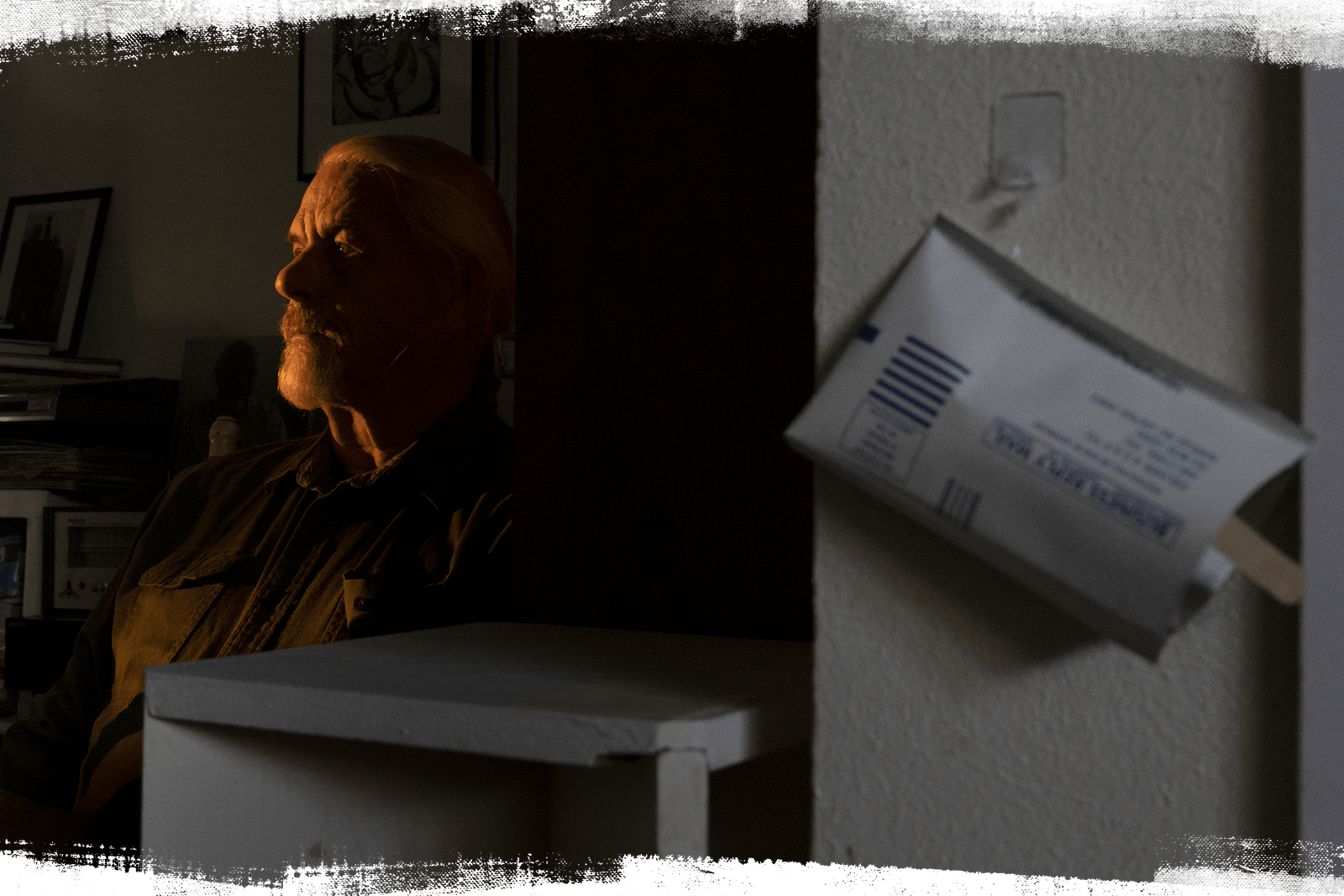This story was originally published by ProPublica.
The “death map” tells the story of decades of sickness in the small northwest New Mexico communities of Murray Acres and Broadview Acres. Turquoise arrows point to homes where residents had thyroid disease, dark blue arrows mark cases of breast cancer, and yellow arrows mean cancer claimed a life.
Neighbors built the map a decade ago after watching relatives and friends fall ill and die. Dominating the top right corner of the map, less than half a mile from the cluster of colorful arrows, sits what residents believe is the cause of their sickness: 22.2 million tons of uranium waste left over from milling ore to supply power plants and nuclear bombs.
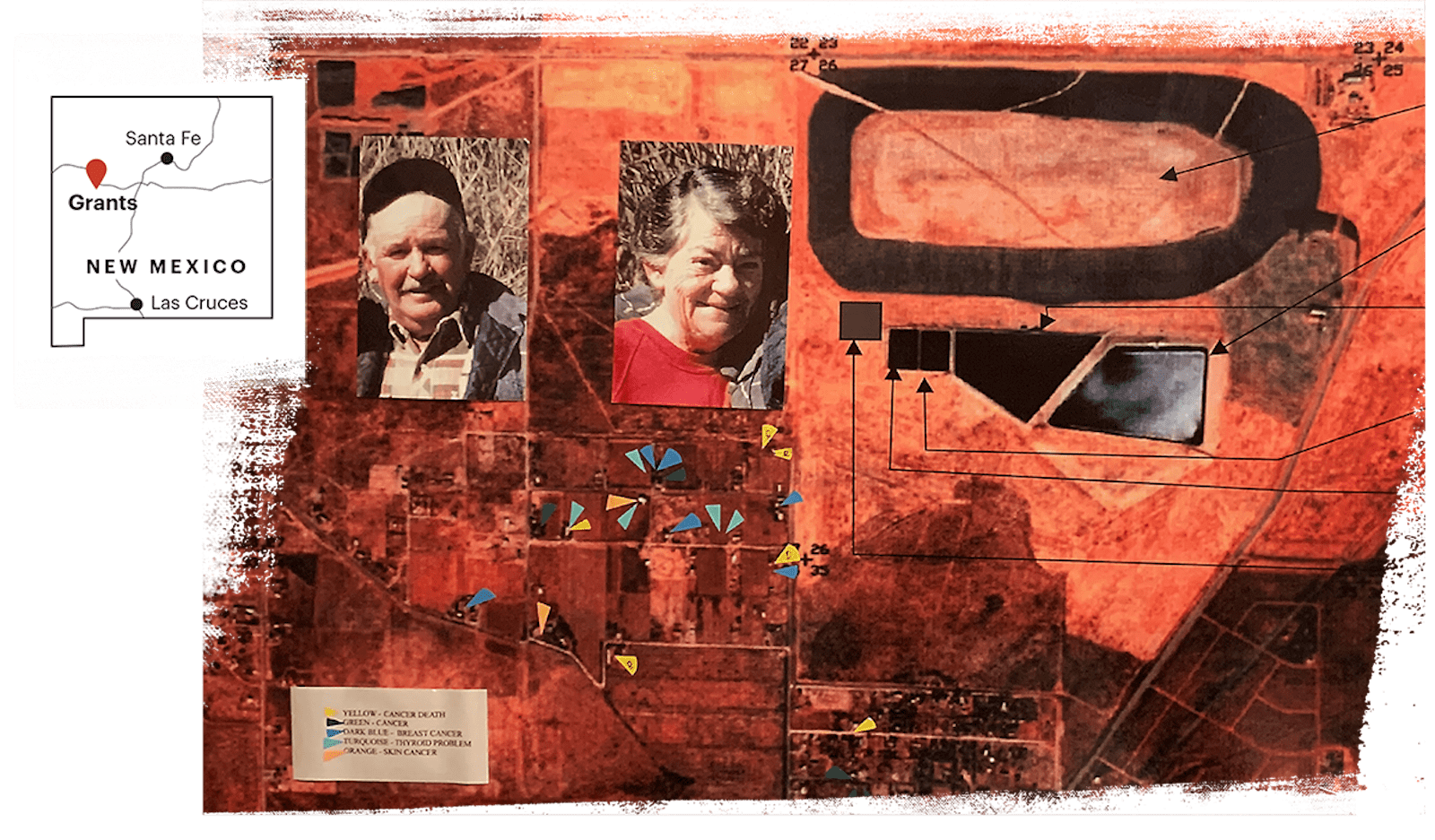
“We were sacrificed a long time ago,” said Candace Head-Dylla, who created the death map with her mother after Head-Dylla had her thyroid removed and her mother developed breast cancer. Research has linked both types of illnesses to uranium exposure.
Beginning in 1958, a uranium mill owned by Homestake Mining Company of California processed and refined ore mined nearby. The waste it left behind leaked uranium and selenium into groundwater and released the cancer-causing gas radon into the air. State and federal regulators knew the mill was polluting groundwater almost immediately after it started operating, but years passed before they informed residents and demanded fixes.
The contamination continued to spread even after the mill closed in 1990.
The failures at Homestake are emblematic of the toxic legacy of the American uranium industry, one that has been well-documented from its boom during the Cold War until falling uranium prices and concerns over the dangers of nuclear power decimated the industry in the 1980s. Uranium mining and milling left a trail of contamination and suffering, from miners who died of lung cancer while the federal government kept the risks secret to the largest radioactive spill in the country’s history.
But for four decades, the management of more than 250 million tons of radioactive uranium mill waste has been largely overlooked, continuing to pose a public health threat.
ProPublica found that regulators have failed to hold companies to account when they missed cleanup targets and accepted incorrect forecasts that pollution wouldn’t spread. The federal government will eventually assume responsibility for the more than 50 defunct mills that generated this waste.
At Homestake, which was among the largest mills, the company is bulldozing a community in order to walk away. Interviews with dozens of residents, along with radon testing and thousands of pages of company and government records, reveal a community sacrificed to build the nation’s nuclear arsenal and atomic energy industry.
Time and again, Homestake and government agencies promised to clean up the area. Time and again, they missed their deadlines while further spreading pollution in the communities. In the 1980s, Homestake promised residents groundwater would be cleaned within a decade, locals told the Environmental Protection Agency and ProPublica. After missing that target, the company told regulators it would complete the job around 2006, then by 2013.
In 2014, an EPA report confirmed the site posed an unacceptable cancer risk and identified radon as the greatest threat to residents’ health. Still, the cleanup target date continued shifting, to 2017, then 2022.
Rather than finish the cleanup, Homestake’s current owner, the Toronto-based mining giant Barrick Gold, is now preparing to ask the Nuclear Regulatory Commission, the independent federal agency that oversees the cleanup of uranium mills, for permission to demolish its groundwater treatment systems and hand the site and remaining waste over to the U.S. Department of Energy to monitor and maintain forever.
Before it can transfer the site to the Department of Energy, Homestake must prove that the contamination, which exceeds federal safety levels, won’t pose a risk to nearby residents or taint the drinking water of communities downstream.
Part of Homestake’s strategy: buy out nearby residents and demolish their homes. Local real estate agents and residents say the company’s offers do not account for the region’s skyrocketing housing costs, pushing some who accept them back into debt in order to buy a new home. Those who do sell are required to sign agreements to refrain from disparaging Homestake and absolve the company of liability, even though illnesses caused by exposure to radioactive waste can take decades to manifest.
Property records reveal the company had, by the end of 2021, purchased 574 parcels covering 14,425 acres around the mill site. This April, Homestake staff indicated they had 123 properties left to buy. One resident said the area was quickly becoming a “ghost town.”
Even after the community is gone, more than 15,000 people who live nearby, many of them Indigenous, will continue to rely on water threatened by Homestake’s pollution.
The company said it has produced models showing that its waste won’t imperil the region’s water if it walks away. The NRC says it will only grant a groundwater cleanup exemption if that’s the case.
But while Homestake and other mining companies have polluted the region, it’s been the NRC and various other agencies that stood by as it happened. ProPublica found the NRC has issued exemptions from groundwater cleanup standards to uranium mills around the country, only to see pollution continue to spread. This has occurred as climate change hammers the West, making water ever scarcer.
“Groundwater moves. Groundwater doesn’t care about regulations,” said Earle Dixon, a hydrogeologist who reviewed the government’s oversight of uranium cleanup and pollution around Homestake for the New Mexico Environment Department and the EPA. Dixon and other researchers predict contamination at Homestake will likely spread if cleanup ends.
The company has denied that its waste caused residents’ illnesses, and judges ruled in Homestake’s favor in a case residents filed in 2004 alleging the site caused cancer. Doctors testified that the pollution was a substantial factor contributing to residents’ cancers, but tying particular cases to a single source requires communitywide blood, urine and other testing, which hadn’t been done.
“We are proud of our work done in remediating the Homestake Uranium Mill site,” Patrick Malone, Homestake’s president, said in a letter responding to questions from ProPublica. He said Homestake was entering the final stages of cleanup because “the site is at a point where it is not technically feasible to provide additional, sustainable improvements to water quality.”
David McIntyre, an NRC spokesperson, attributed cleanup delays to the area’s complex groundwater system. “We understand and share the concern that remediation is taking so long,” McIntyre said, adding that the agency’s priority is to protect public and environmental health rather than meet particular deadlines.
The EPA has oversight of the former mill’s cleanup under its Superfund program that aims to clean the country’s most toxic land. The EPA regional office did not respond to questions.
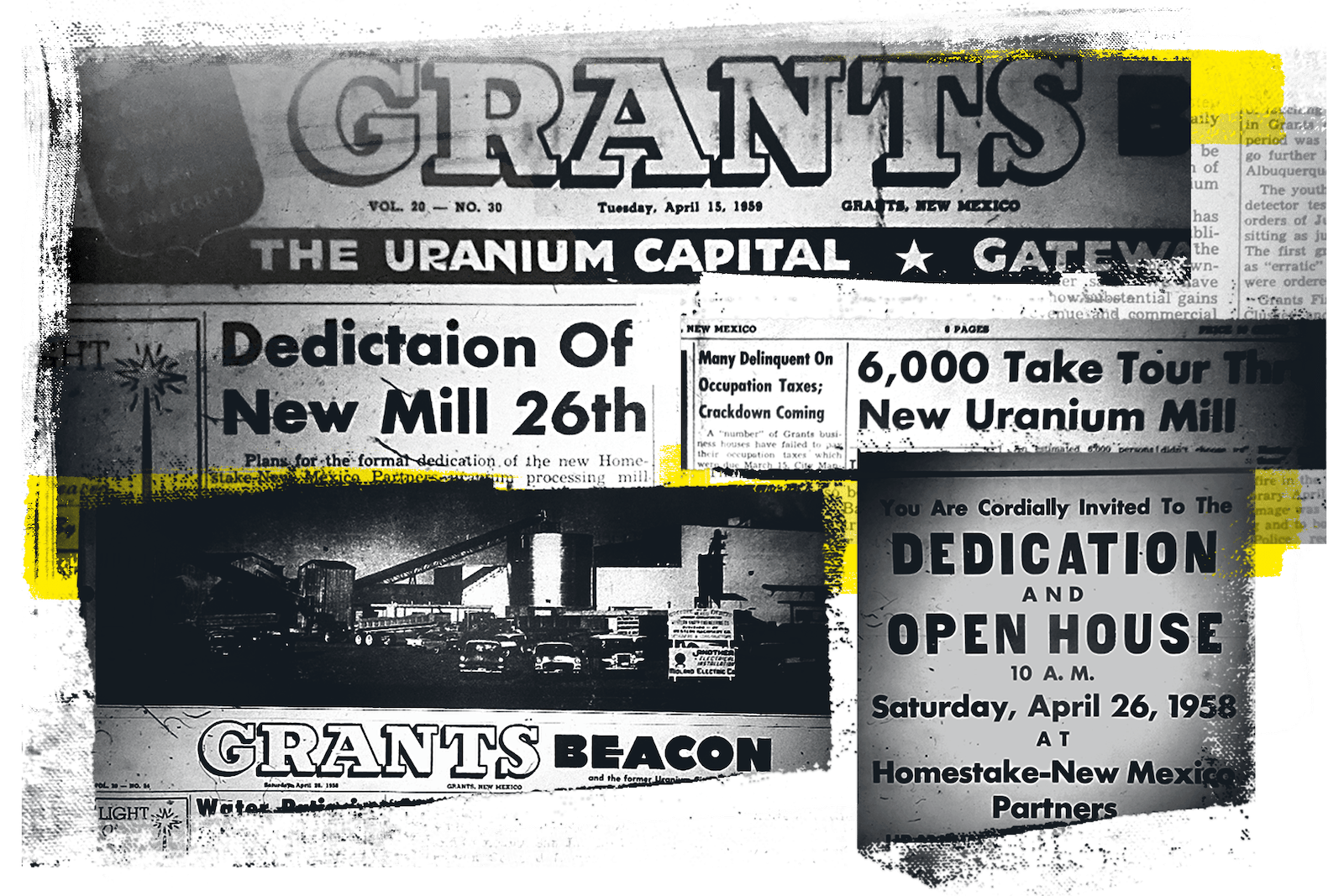
Larry Carver has implored an endless stream of regulators to take action since his family moved to Murray Acres in 1964, and neighbors defer to him to tell the community’s story. The 83-year-old leaned against his Chevrolet pickup on a blustery spring morning, peering from beneath a baseball cap at Homestake’s 10-story pile of waste. He lamented that the community would be sacrificed so uranium waste could remain.
For Carver, arrows on a map don’t tell the full story of uranium’s impact. His wife’s aunt and uncle owned the home closest to the waste piles. Her aunt died of liver cancer when she was 66 years old, and her son, who grew up playing in unfenced waste ponds, died of colon cancer when he was 55 years old. Now, Carver and his wife both have spots on their lungs, with hers recently requiring radiation treatment.
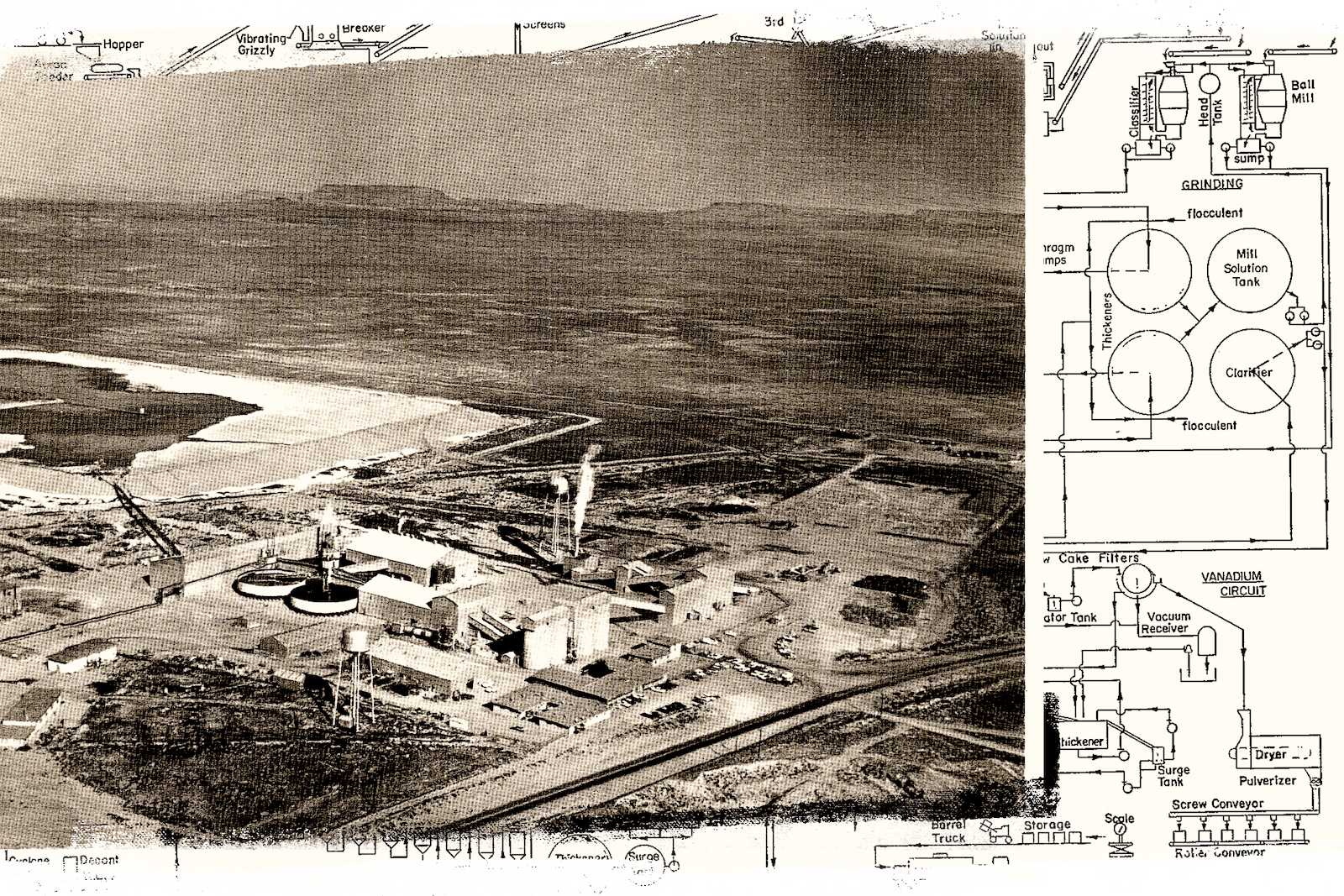
“All the houses are going to be gone. The wells are being plugged. The septic systems are being torn up,” Carver said. “There will be nothing.”
Saturday, April 26, 1958, was a momentous day in the towns of Grants and Milan, New Mexico.
Full-page newspaper ads announced the opening of Homestake’s new uranium mill. A military flyover kicked off the festivities, a high school band played, and the New Mexico secretary of state unveiled a plaque commemorating the occasion. An estimated 6,000 people, nearly three times Grants’ population at the beginning of that decade, toured the mill, the local newspaper, the Grants Beacon, reported. Grants would be the Carrot Capital of America no more. It was running headlong into the Atomic Age.
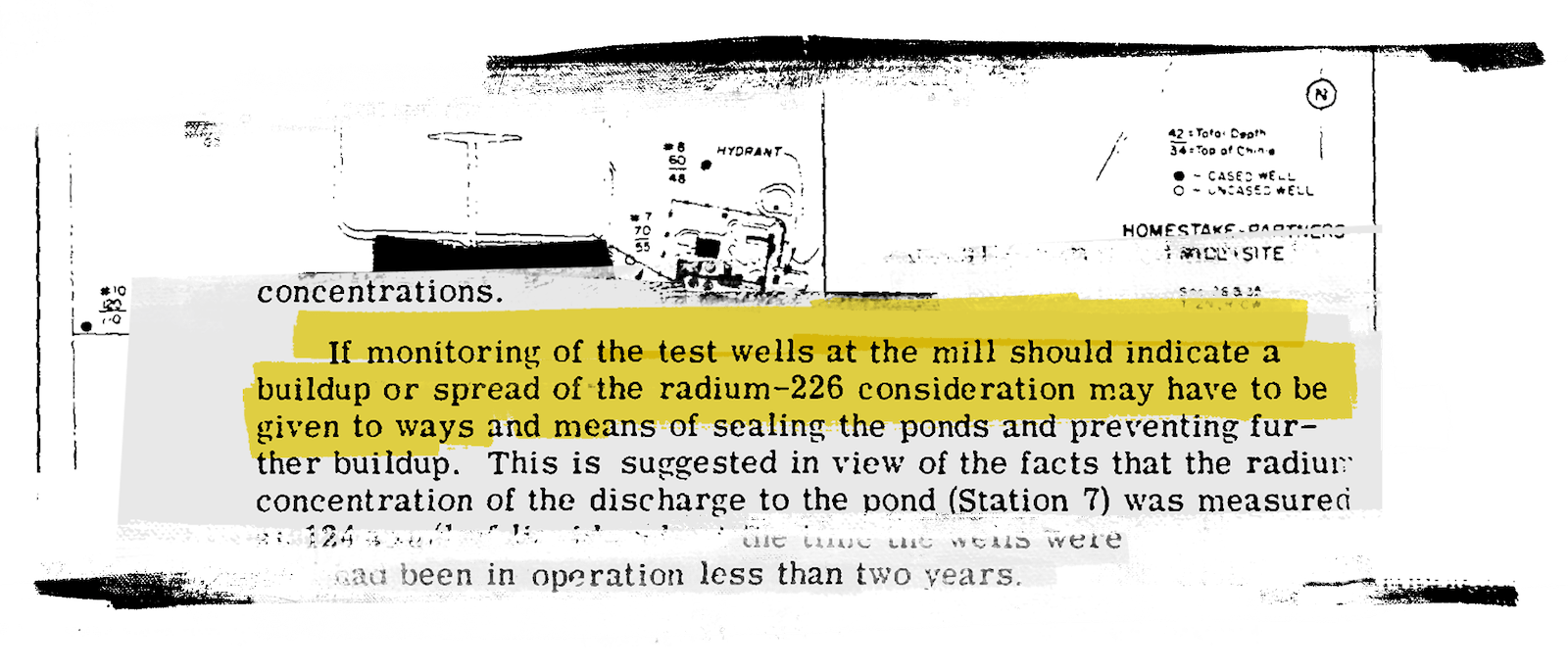
But the celebration was short-lived: Less than a year and a half after operations began, state and federal regulators, with the company’s help, began investigating whether contaminants were leaking from Homestake’s waste.
ProPublica found that, as with most uranium mills in the U.S., Homestake built no liner between the earth and the sandy waste left over from milling, known as tailings. This happened even though an engineer with the New Mexico Department of Health warned the company only weeks after the mill opened that it needed to at least compact the soil underneath its waste to prevent leaks. Without a liner, pollution seeped into aquifers that supplied drinking water. In 1961, the same engineer wrote that groundwater samples showed radium 226, a radioactive and cancer-causing element, at levels as much as 31 times higher than naturally occur in the area, indicating “definite pollution of the shallow ground water table by the uranium mill tailings’ ponds.”
A federal report a year later identified even higher levels of radium 226 in groundwater.
Residents drank that water, fed it to livestock and applied it to crops. They weren’t told of the issue or supplied with bottled water until the mid-1970s, neighbors said. “A long time to keep the secret,” Carver said.
The EPA in the 1970s found elevated levels of selenium, which can damage the nervous system at high doses. Homestake disputes what levels of contaminants are attributable to the mill versus other sources, a question regulators are currently studying. The company confirmed in 1976 that its waste had created a plume of contamination in the groundwater but waited another decade to connect residents to an uncontaminated water system, only doing so after pressure from the EPA.
Seventeen years after pollution was first detected, Homestake began a series of ultimately unsuccessful attempts to clean the groundwater. The company pumped contaminated water out of aquifers and evaporated it aboveground, treated it in filtration systems and dumped hundreds of millions of gallons of clean water on the waste to flush uranium out of the pile, collecting the newly contaminated water for disposal.
Homestake was still left with more polluted water than it could process, so the company irrigated crops, applying more than 3.1 billion gallons to farmland in the subdivisions. As a result, the topsoil contained elevated levels of uranium and selenium. The state and the NRC halted the practice, which the NRC said the company had done without its approval.
Much of the now-fallow farmland has turned to dust that’s an incessant headache for residents. Windstorms whip it up, piling it on roadways and pushing it through the slightest cracks in homes. Regulators have issued dozens of violation notices to the company, including for failing to fence off contaminated land and for exposing workers to high uranium levels without alerting them.
At the state level, New Mexico regulators waited until 2009, 49 years after first finding water pollution, to issue a formal warning that groundwater included substances that cause cancer and birth defects. They waited another nine years before barring people from drilling new or replacement wells in aquifers near the cleanup effort, but the order did not require existing wells to be plugged. A spokesperson for the New Mexico Office of the State Engineer said authorities had issued a “relatively small” number of domestic or livestock well permits in the contaminated area. That number, the spokesperson said, is 122.
Uranium exposure is pervasive in this part of the world.
Miners who worked before 1971, when the government was the sole purchaser of uranium, are eligible for compensation under the Radiation Exposure Compensation Act. In June, President Joe Biden signed a bill postponing its expiration for two years. But miners who worked in the industry after other uranium buyers entered the market, as well as residents of communities that were impacted by uranium extraction and processing, like those next to Homestake, still receive no benefits. Spearheaded by the New Mexican delegation, bills pending before Congress would expand the legislation to include more miners and appropriate funds to study the health impacts of living near these sites.
Linda Evers is waiting on those reforms. She worked in the area’s mines and mills, including Homestake, after the 1971 cutoff. She stayed on the job through two pregnancies, removing trash from the ore until hours before she gave birth to her son. Both her children have birth defects, and she now lives with kidney failure, cysts on her organs and a degenerative bone disease.
“You worked in a never-ending dirt storm,” Evers remembered. “You were supplied a paper mask that was worthless in about 20 minutes.”
She also dealt with contamination at home. For more than 15 years, Evers lived across the street from Homestake. Her well water was so foul it stunted the plants in her garden, she said. Evers eventually accepted the company’s buyout offer and moved to a new home farther from the waste. A half-built greenhouse sits in her former backyard, her once-lively home stripped of its porch and part of the roof.
Down the road, John Boomer doesn’t know where he’ll go if he sells to Homestake. An artist who paints with a Southwestern palette of sand and soil, he lives in an art studio and home he shares with his partner, Maggie Billiman, a member of the Navajo Nation and fellow artist.
The consequences of uranium production are constantly on the couple’s minds. More than 500 abandoned uranium mines pockmark the Navajo Nation, and Billiman’s father, a Navajo Code Talker in World War II, died of stomach cancer, an illness associated with downwind exposure to nuclear tests. Boomer has written the story of uranium into lyrics, singing about the harm caused by the waste that was left behind.
Those corporate little creeps
Will cause many a widow to cry and weep
While I’m just left on the ground to seep
Homestake is working on requests to both the NRC and the EPA for groundwater cleanup waivers, arguing it’s done all it can to clean up the area.
The company excavated soil from more than 3,500 acres where wind had carried contaminants off-site. Homestake also collected about 1.3 million pounds of uranium and 75,000 pounds of selenium by treating or evaporating more than 10 billion gallons of groundwater, according to company data.
Other uranium mines and mills polluted the area’s main drinking water aquifer upstream of Homestake. Residents worry what will happen to contamination from those sites and from Homestake when the company halts its water treatment.
Homestake says it has built a hydrological model that shows the former mill’s contamination will stay close to the site. (The model won’t be released until the company files its formal application for cleanup exemptions, likely in August.)
But researchers who have studied the hydrology around Homestake said the contamination will head downstream. “Would it keep on moving? Yes, that’s nature,” said Dixon, the hydrogeologist. The real question, he said, one that modeling can’t answer, is how quickly the pollution will migrate.
ProPublica identified sites across the West where regulators approved waivers based on modeling, only to later discover the predictions were flawed.
At a site in Wyoming called Bear Creek, the NRC found concentrations of uranium in groundwater more than 10 times higher than a model had predicted. At a site along the banks of the Colorado River, in Rifle, Colorado, the NRC approved a cleanup plan based on groundwater modeling that predicted uranium would fall to safe levels within 10 years. Monitoring showed concentrations remained dangerously high about a decade later, and new modeling predicted uranium levels wouldn’t reach safe levels for more than a century.
There’s also the cleanup of another Wyoming mill named Split Rock, which Homestake has compared its site to as it seeks a cleanup exemption. Regulators granted a waiver in 2006 after the responsible company presented a model showing contamination wouldn’t reach downstream wells for 1,000 years. “The recent data, however, have shown results that are not consistent with the model predictions,” the NRC wrote seven years later. Nitrates, which are sometimes used in the uranium refining process, were measured in a downstream monitoring well at more than four times approved limits.
McIntyre, the NRC spokesperson, said that in those cases, “NRC staff reviewed groundwater monitoring results and verified that the levels were and remain protective of public health and safety,” adding that the agency requires models used in waiver requests be conservative in their predictions.

Leaders of communities downstream from Homestake, including the Pueblo of Acoma, fear that wishful thinking could allow pollution from the waste to taint their water. The Acoma reservation, about 20 miles from Homestake’s tailings, has been continuously inhabited since before 1200. Its residents use groundwater for drinking and surface water for irrigating alfalfa and corn, but Donna Martinez, program coordinator for the pueblo’s Environment Department, said the pueblo government can’t afford to do as much air and water monitoring as staff would like.
“There are always going to be concerns with the plumes,” Martinez said.
Most days, Billiman contemplates this “poison” and whether she and Boomer might move away from it as she prays to Mother Earth and Father Sky toward Mount Taylor, one of the four sacred Diné peaks, which rises just east of the subdivisions.
“I tell her, gosh, we did this to you. I’m sorry,” Billiman said. “Then, we just say ‘hózho náhásdlii, hózho náhásdlii’ four times.”
“All will be beautiful again,” Boomer roughly translated.
As they prayed one recent morning, the dawn light tumbled over the mountain, illuminating the nearby Haystack Mountain, where a Diné man named Paddy Martinez discovered economically recoverable uranium in 1950 and ignited the region’s mining boom. The light cascaded over Homestake’s tailings piles, across the valley and onto the five subdivisions.
The smell of pizza wafted through a Village of Milan government building down the road from the mill site, as about 20 locals trickled in to meet with Homestake one April evening. They caught up while JoAnne Martinez, a community liaison for Homestake, beseeched them to tuck into the food she had set out. A map taped to the wall showed the location of groundwater contamination, and a stack of glossy booklets celebrated the company’s reclamation project with the slogan: “Doing it right… …Right to the end.”
Tensions rose when residents spoke about the company’s offers to buy their properties. Homestake, whose parent company Barrick had nearly $12 billion in revenue last year, pays market value based on past sales prices of comparable properties, rather than the cost to replace what residents have, which is ballooning rapidly amid the housing crunch. Over the past five years, prices for residential properties around New Mexico have increased about 59%, while they’ve spent about half as long on the market, according to data from real estate companies Zillow and Redfin, respectively.

In the meeting, residents explained what that trend, coupled with Homestake’s offers, has meant for their own housing searches. “It’s like you spit on me,” one resident said of the company’s proposal to buy the property where she has lived for 61 years. Another neighbor told ProPublica she had asked a builder to assess the cost of constructing a nearly identical home and got an estimate $60,000 higher than what Homestake offered. But Homestake didn’t budge.
Neighbors have worried about Homestake’s impact on their property value for decades. They filed a class-action lawsuit against the company in 1983 for alleged property damages, later settling the case for what they deemed to be small payouts. In exchange, those residents agreed to release the company from further liability.
More recently, the company has rejected residents’ requests to move the waste to a lined disposal cell, which could prevent additional groundwater contamination and radon exposure and possibly allow them to stay in their homes. So far, cleanup has cost more than $230 million, including about $103 million that came from taxpayers through the Department of Energy. Homestake estimates it could cost as much as $2 billion more to move the entire pile. Buying out five subdivisions is the cheaper option.
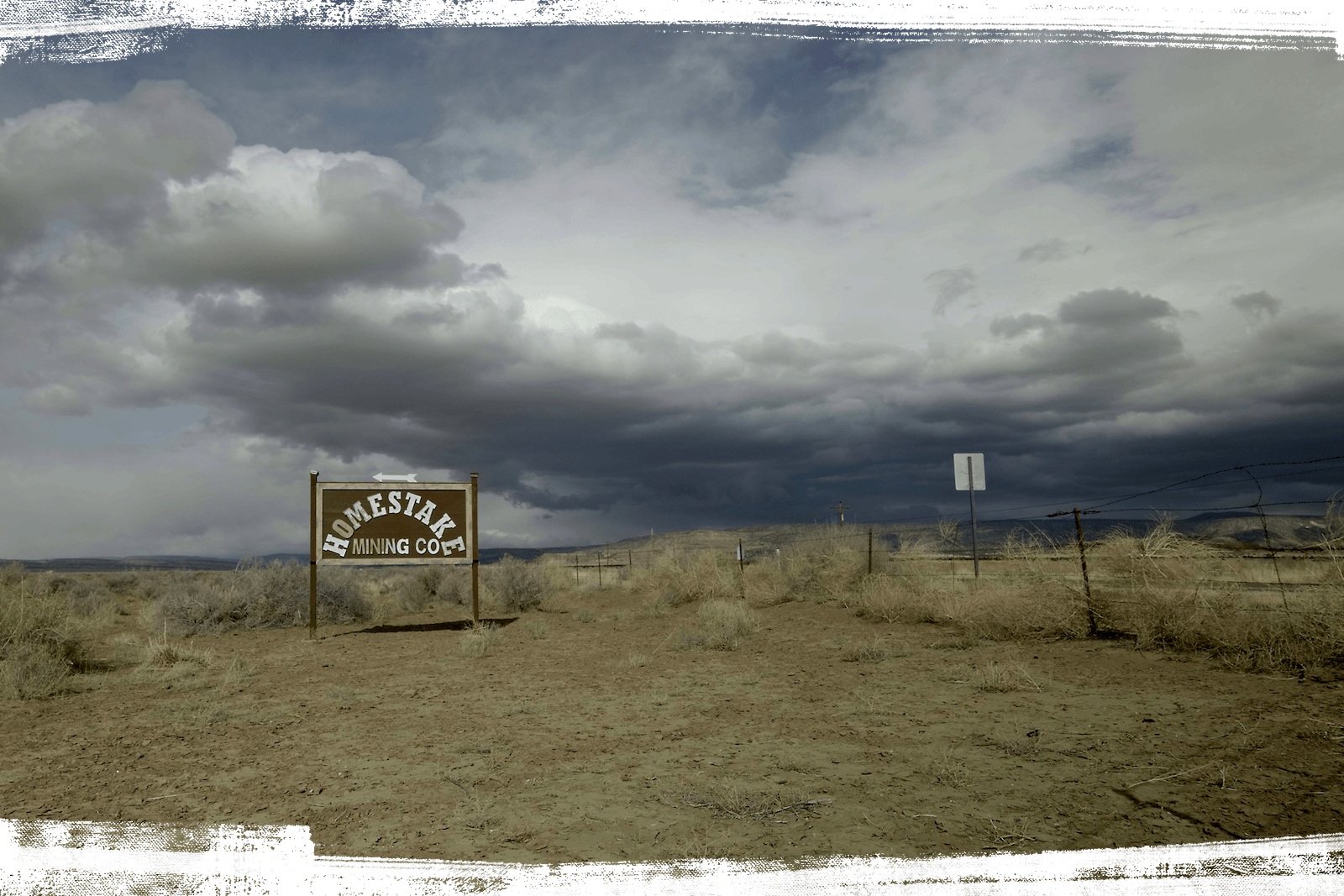
Homestake argues capping the site and walking away is safer, citing reports that conclude moving the pile would lead to at least one workplace traffic-related death and a high likelihood of workers and residents developing cancer. The reports used calculations from the Department of Energy, which is moving 16 million tons of uranium waste off of a site in Moab, Utah. The department’s report found it posed far less risk to workers than later estimates for Homestake. Department of Energy staff said they could not comment on why there are such different risks for the Homestake and Moab sites.
As more neighbors at the meeting demurred about the company’s offers, Orson Tingey, a land manager for Homestake and Barrick, explained that the company has continued to offer the same rates for properties as it did before the COVID-19 pandemic to remain consistent. “We know that doesn’t necessarily work for everybody,” he said.
Jackie Langford set a radon detector on her kitchen table and shooed away her inquisitive 12-year-old, who was more interested in talking uranium policy than finishing his homework. She recalled when her family moved in a decade ago for her husband’s job. No one mentioned the risks posed by Homestake’s tailings pile, which looms less than a mile away.
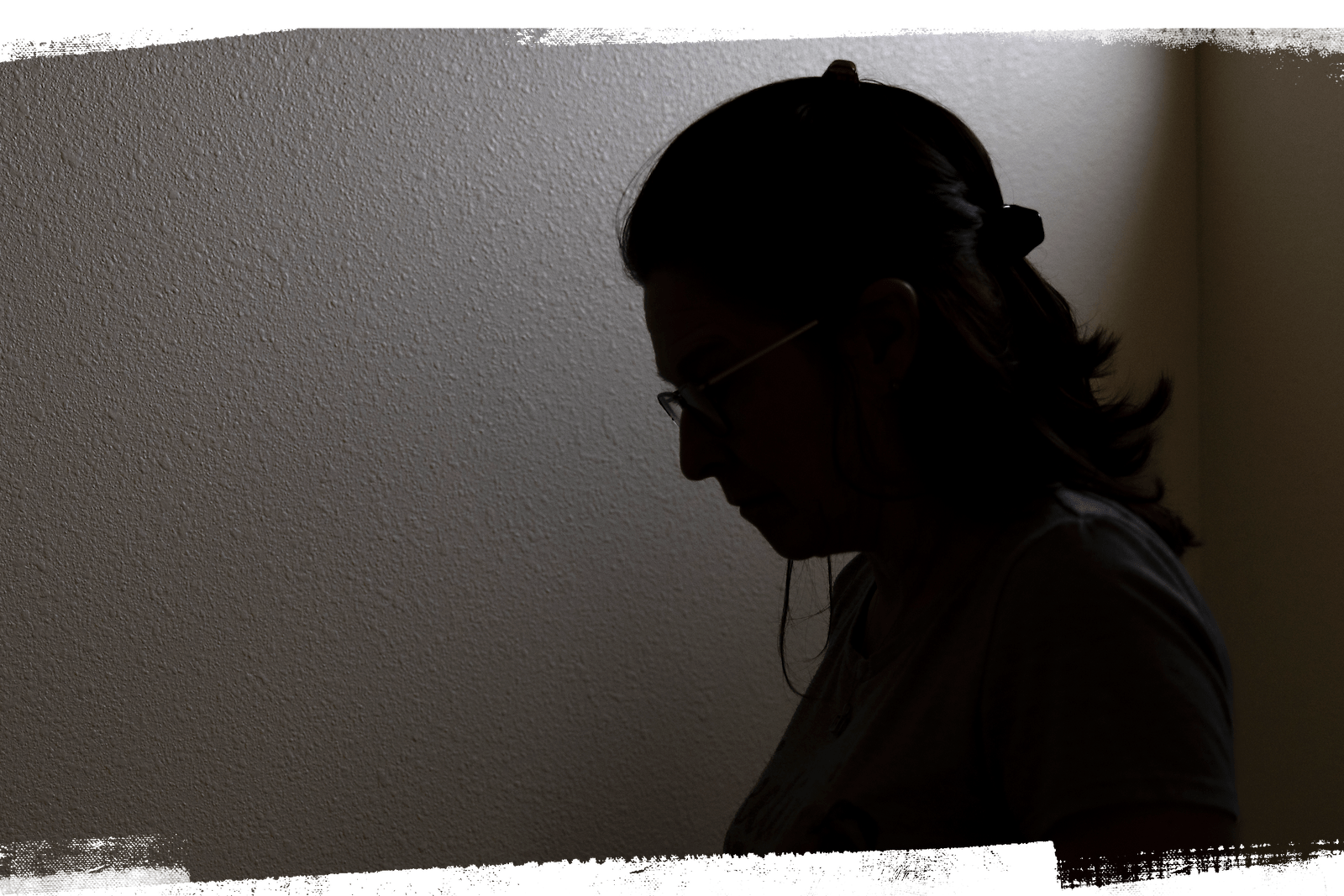
Now, as a registered nurse tending to former uranium miners, Langford knows too much about the dangers. When it’s inhaled, radon breaks down in the lungs, releasing bursts of radiation that can damage tissue and cause cancer. Her patients have respiratory issues as well as lung cancer. They lose their breath simply lifting themselves out of a chair.
Radon, the radioactive gas formed as uranium decays, poses Homestake’s main cancer threat to residents, according to the EPA’s 2014 study. It is more concentrated in outdoor air near Homestake than in a nearby community with a former uranium mill that has fully covered its waste.
It hasn’t helped that the company has struggled to control radon emanating from its larger waste pile, exceeding federal safety standards each of the last six years, according to company readings reported to the NRC. This year, Homestake requested permission to add a new cover to the pile to reduce radon emissions, which the NRC is now reviewing.
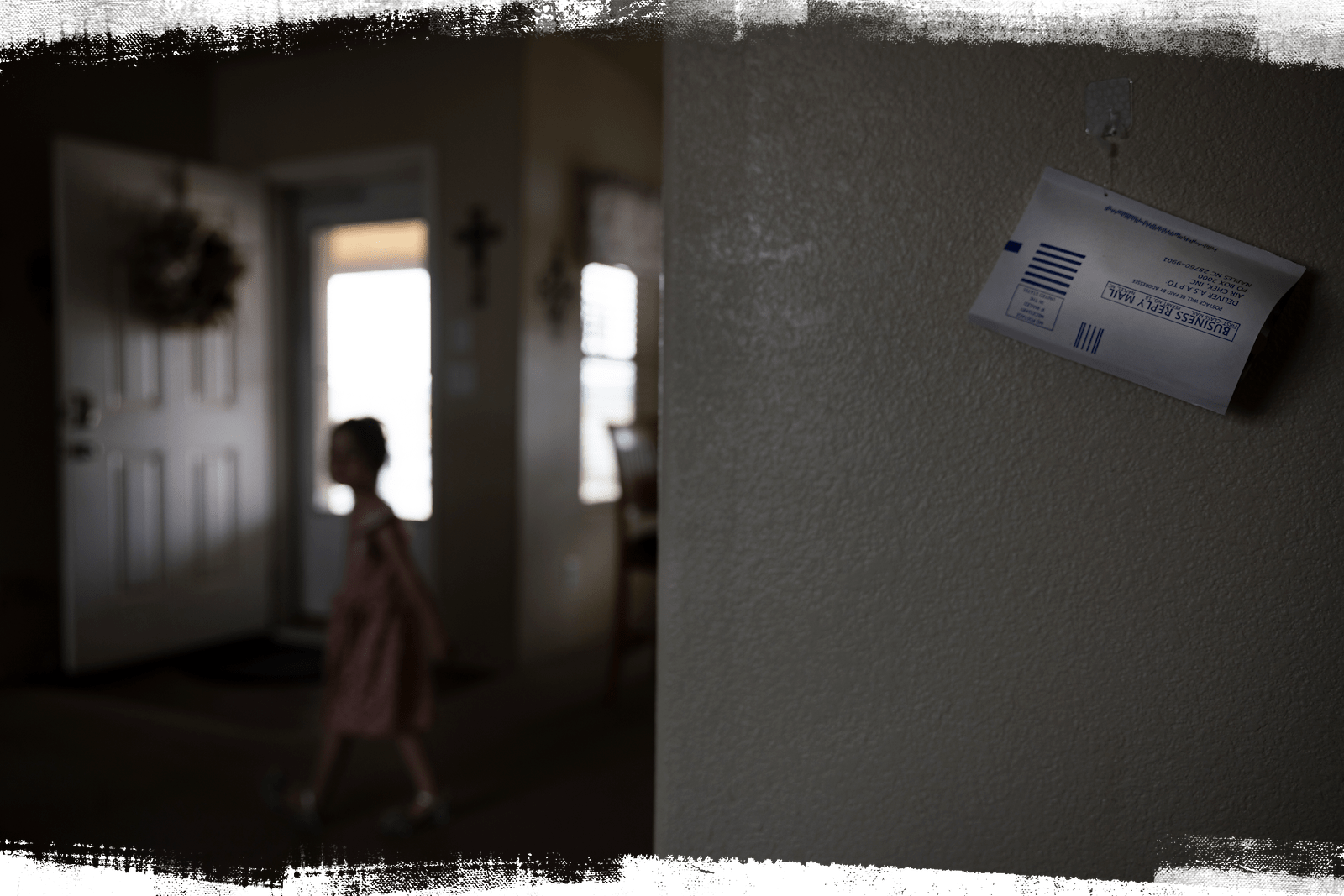
During the pandemic Langford and her family began thinking more about Homestake’s possible impact on their respiratory health, driving them to buy a radon detector. The gas can seep into buildings through cracks in foundations. Indoor radon exposure is the second-leading cause of lung cancer in the United States, behind smoking.
When Langford measured levels in her home, the radon detector registered 4 picocuries per liter and rose as high as 7 pCi/L, she said — levels high enough that the EPA recommends remediation.
She brought her concerns to Homestake, but “for the longest time, they wouldn’t talk to me,” she said. The company eventually connected her with one of their consultants, who told her not to worry because his own home tested above 4 pCi/L and the results did not concern him. He also told Langford, as well as ProPublica, that he is not a radon expert and suggested she complete a longer-term radon test and contact people better versed on the topic.
In 2010, before Langford moved in, EPA contractors placed radon detectors in homes near Homestake and found unsafe radon levels in a dozen homes.
While independent researchers suggested the uranium waste could be a source of indoor radon, the EPA has not determined that is the case, instead identifying naturally occurring gas seeping from the soil. The agency required Homestake to fund radon mitigation in homes but has not done any more radon testing or mitigation since.
“Best practice would be retesting at least every other year to assure things have not gotten worse,” said Michael Murphy, who is retired from the EPA’s indoor air quality team.
ProPublica spoke with eight households the EPA monitored, and all said they were never retested or advised to retest on their own. An EPA staffer told one resident the agency had no plans to conduct follow-up studies.
John Boomer and Elaine Borchert measured radon levels in their homes. Ed Ou for ProPublica.
Because the EPA did not return to test, ProPublica did, placing certified indoor radon kits in nine area households. Three returned readings that exceeded the EPA’s threshold for mitigation, while a fourth registered above the World Health Organization’s lower suggested mitigation level. Langford’s tests averaged 6.95 pCi/L.
She immediately thought about her son. Children are more vulnerable to radon.
Early this spring, Homestake approached Langford and her husband with an offer to purchase their home. They wavered. The family loved the area and knew neighbors who had sold, only to find it impossible to buy a similar property elsewhere.
“I don’t think that’s fair,” Langford said, “but at this point I don’t even know how you fight it.”
With the results from their radon testing front of mind, Langford’s husband signed Homestake’s buyout deal. The family had made a decision. Their health was too important to remain in their home.
How ProPublica reported the story
Methodology: To report on the Homestake uranium mill’s impact on the area, ProPublica worked with residents to crowdsource indoor radon levels, home purchasing contracts and health-related documents.
Radon Testing: Indoor radon levels were collected using Air Chek 3- to 7-day radon test kits placed in nine houses in Milan and Grants, New Mexico. Air Chek’s devices and laboratories are included on the National Radon Proficiency Program’s approved device and analysis provider list.
Radon levels vary day to day and season to season, so ProPublica followed EPA recommendations to conduct two sequential short-term tests. A ProPublica reporter helped install the first test at each house to ensure the testing locations adhered to EPA testing protocols. After about five days, residents took down each test and sent the kits to Air Chek’s laboratory. Residents immediately placed the second Air Chek 3- to 7-day test in the same location. About five days later, residents shipped the second test to the lab. We averaged the results of the two tests to obtain an estimated indoor radon level for each house.
Three households were only able to obtain one result. In one case, this was because a test was not properly sealed and could not be analyzed; in another, a test had a manufacturing defect; due to a shipping delay the third arrived at the laboratory beyond the necessary time frame for testing. For these three households, we relied on the readings from one test. Each of the households that received only one test showed levels below the EPA and World Health Organization thresholds for radon mitigation.
Before placing the tests, we interviewed seven professionals with radon testing expertise and reviewed the EPA and American Association of Radon Scientists and Technologists’ testing guidelines. These independent experts reviewed ProPublica’s methodology and provided feedback. After testing, ProPublica presented the results to the same experts.
We also discussed the results with residents of each household that hosted tests.
Outreach Methodology: To interview as many households living near the mill site as possible, we mirrored community engagement efforts conducted by federal and state authorities during previous environmental health studies. This included:
- Publishing advertisements in the Cibola Citizen and Gallup Independent
- Sending letters to every household in the area
- Following up with phone calls and text messages to numbers associated with every area household
- Door-knocking at households that did not respond to the ads, letters and phone calls
Alex Mierjeski and Mollie Simon contributed research.



